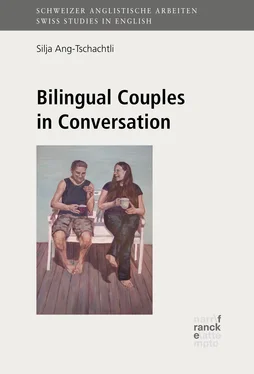Culture is the way of life of a people or society, including its rules and behavior; its economic, social, and political systems; its language; its religious beliefs; its laws; and so on. Culture is acquired, socially transmitted, and communicated in large part by language. (1982: 157)
Spencer-Oatey emphasizes the complexity of culture, defining it as “a fuzzy set of attitudes, beliefs, behavioural conventions, and basic assumptions and values that are shared by a group of people, and that influence each member’s behaviour and each member’s interpretations of the ‘meaning’ of other people’s behaviour” (2000a: 4). Culture may not always be apparent; rather, it “is manifested at different layers of depth, ranging from inner core basic assumptions and values, through outer core attitudes, beliefs and social conventions, to surface-level behavioural manifestations” (Spencer-Oatey 2000a: 4).
Given the complexity and elusiveness of one single culture, the situation becomes even more complicated when multiple cultures come into contact. If this contact is extended, as in the case of cross-cultural couples, this often leads to biculturalism, “the coexistence and/or combination of two distinct cultures” (Grosjean 1982: 157). I consider all couples in this book to be bicultural, independent of the extent to which they combine their two cultures as a couple. It should be noted, though, that there may be vast differences with regard to the level of acculturation of both partners to the other’s culture.
3.2.2 Biculturalbiculturalcouples couples
While bicultural and/or binational couples used to be the exception rather than the norm in Western countries, they have become much more common in recent decades. In Switzerland, for example, intermarriage rates between Swiss and foreign nationals have increased substantially over the past 35 years. In 1980, only 18.0% of the Swiss population married a foreign national; this figure had risen to 42.2% by 2015 (BFS 2016d). Exogamous marriages are a little more common among Swiss men than women, as 54.8% of all binational marriages in 2015 (compared to 60% in 1980) were between a Swiss male and a foreign national. Similarly, demographic evidence from Germany and the USA provided by Piller suggests that international intimate relationships have also increased dramatically in these countries over the past 30 years (2007: 343). Piller argues that globalisation has facilitated this trend, since there is increased international mobility, data flow and cultural exchange (2007: 344). It is also possible that “advances in travel and education, military and political incentives, the introduction and effects of broader civil rights […] have all contributed to the increase of marriage between people of different faiths, cultures, nationalities, and races” (Perel 2000: 178).
Scholarly attention to cross-cultural couples has been moderate in the past. Before the 1990s, a number of studies were carried out on the experiences of cross-cultural, cross-national, interfaith or interracial couples, but the majority of them were small-scale studies on couples that consisted of a Western and a non-Western spouse (see Cottrell 1990: 152 for an overview of 33 studies on intercultural marriages). Some studies on bicultural couples have attempted to gain insight into their relationships by documenting the experience of the women (often the “foreign spouse”) in these relationships, rather than looking at the relationship as an entity. An example of this is Khatib-Chahidi, Hill, and Paton’s (1998) study on 20 women in mixed marriages, which addresses the question of motives for entering a cross-cultural relationship. The subjects were nationals of nine different countries, who had all met and married their foreign spouse in their own country. Khatib-Chahidi, Hill and Paton were interested in ascertaining whether the intermarriages of these women were a random choice, or whether they had selected their spouses, “consciously or unconsciously, according to certain predetermined criteria” (1998: 49). Many of their respondents reported that they married “out” because they felt marginalizedmarginalization within their families or in society, or because they wanted to escape the gender roles of their own culture (1998: 57–62). At the same time, many of the women emphasized that they had a lot in common with their spouse, and that they liked that their partner was different from their countrymen, whom they portrayed as “boring” (1998: 52–53). In addition, a large number of the interviewees “reported significant interaction with foreigners before meeting their husband” (1998: 57), which suggests that they were open to engaging with somebody with a different cultural background.
The study shows that marrying someone from a different culture may be seen as a means of escaping one’s own environmentenvironmentdifferent, and that the differences are often seen as interesting, enriching or attractive. At the same time, differing cultural practices and ideologies can also be a source of conflict (see also section 3.2.3, “Cultural challenges”). Breger and Hill put it follows:
By definition, culturally mixed marriages present those involved with a wider palette of cultural practices than culturally homogenous marriages, including such issues as gender roles, child-rearing, mores, language and general lifestyle by which to shape their lives. Sometimes, there may be little awareness of difference, or indeed the differences may be minimal […] On the other hand, in the process of everyday life, differences can become clearer, forming a highly charged minefield of conflict, or a source of enriching diversity, or even both. (1998: 19)
Such issues and challenges for bicultural relationships have been highlighted and examined by a relatively large body of research. Older studies in particular often assumed that bicultural relationships are problematic, and that there is a “higher risk of communication difficulties, marital dissatisfaction, [and] divorce” (Killian 2009: xix). This view has only started to change in recent years, as “cross-cultural couples have increased in both numbers and social acceptance, and there is now a growing awareness of how little we really know about them” (Killian 2009: xix).
3.2.3 Cultural challengeschallengescultural
The specific challenges faced by intercultural, bilingual couples depend very much on the linguistic, cultural and social backgrounds that are involved. As Rosenblatt observes, “[e]ach particular combination of cultures, social class, location where the couple lives, and so on creates a set of challenges, issues, and themes that might be quite different from what couples with other combinations of characteristics experience (Cottrell, 1990). In this sense, every intercultural couple needs its own theory” (2009: 3). Therefore, research on bilingual couples should take into account the specific socio-cultural backgroundcultural background of the partners, which it sometimes fails to do (Killian 2009: xviii). With regard to the current study, it should also be noted that English-German-speaking couples are often viewed as unproblematic due to the proximity of the two cultures, as they are thought to share a Western or European heritage (Piller 2002a: 6). There are, however, some issues which seem to surface again and again even in close intercultural relationships, which will be discussed in this section.
Since culture is so complex and difficult to separate from other factors, bicultural couples may not recognize that some of their differences are rooted in their cultures; conversely, they may attribute personal differences to their variant cultures when they are actually due to other factors. According to Perel,
conflicts often turn out to be more connected to culture than couples realize — although naturally intrapsychic sources of conflict are generally simultaneously at work. Other couples, on the other hand, often err by focusing exclusively on their cultural differences as the source of all pain, thereby eschewing taking responsibility for their actions. (2000: 196)
Читать дальше












